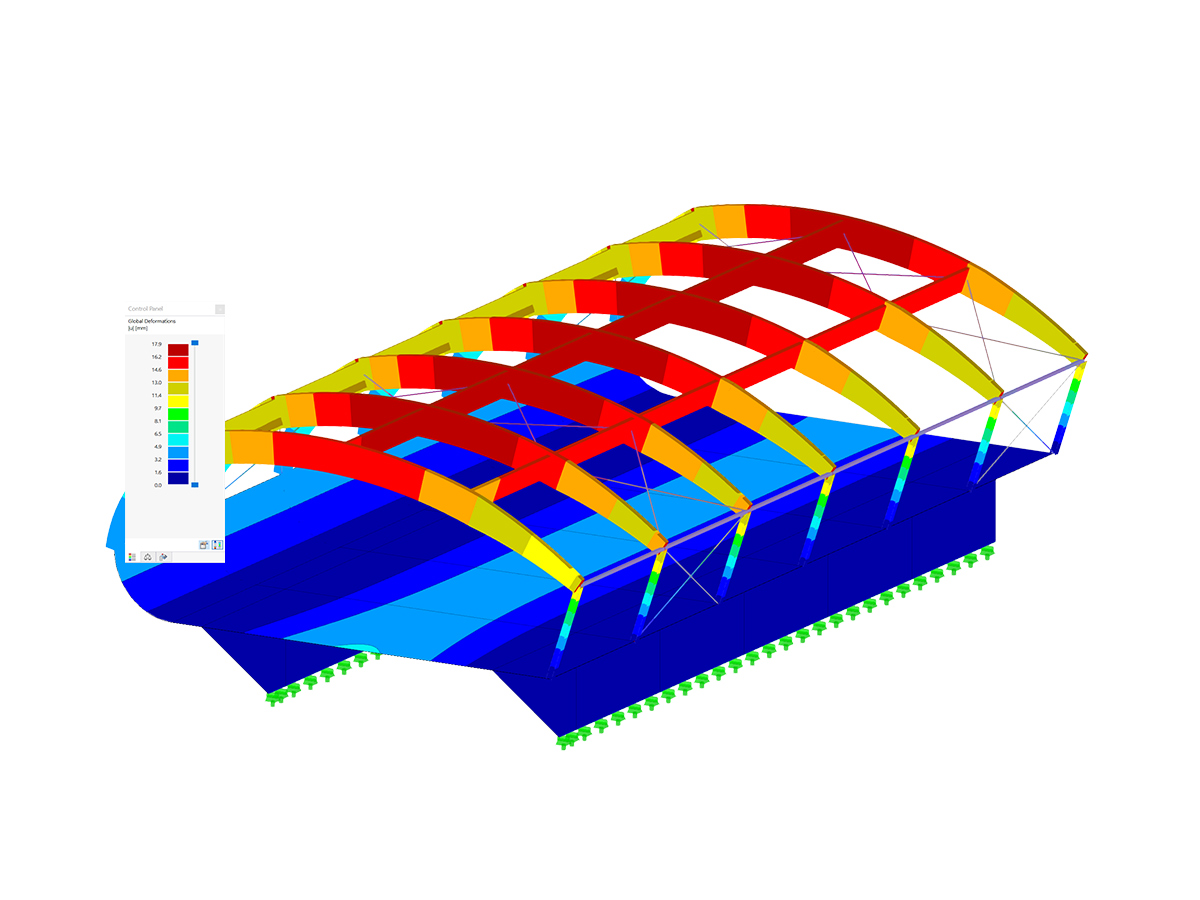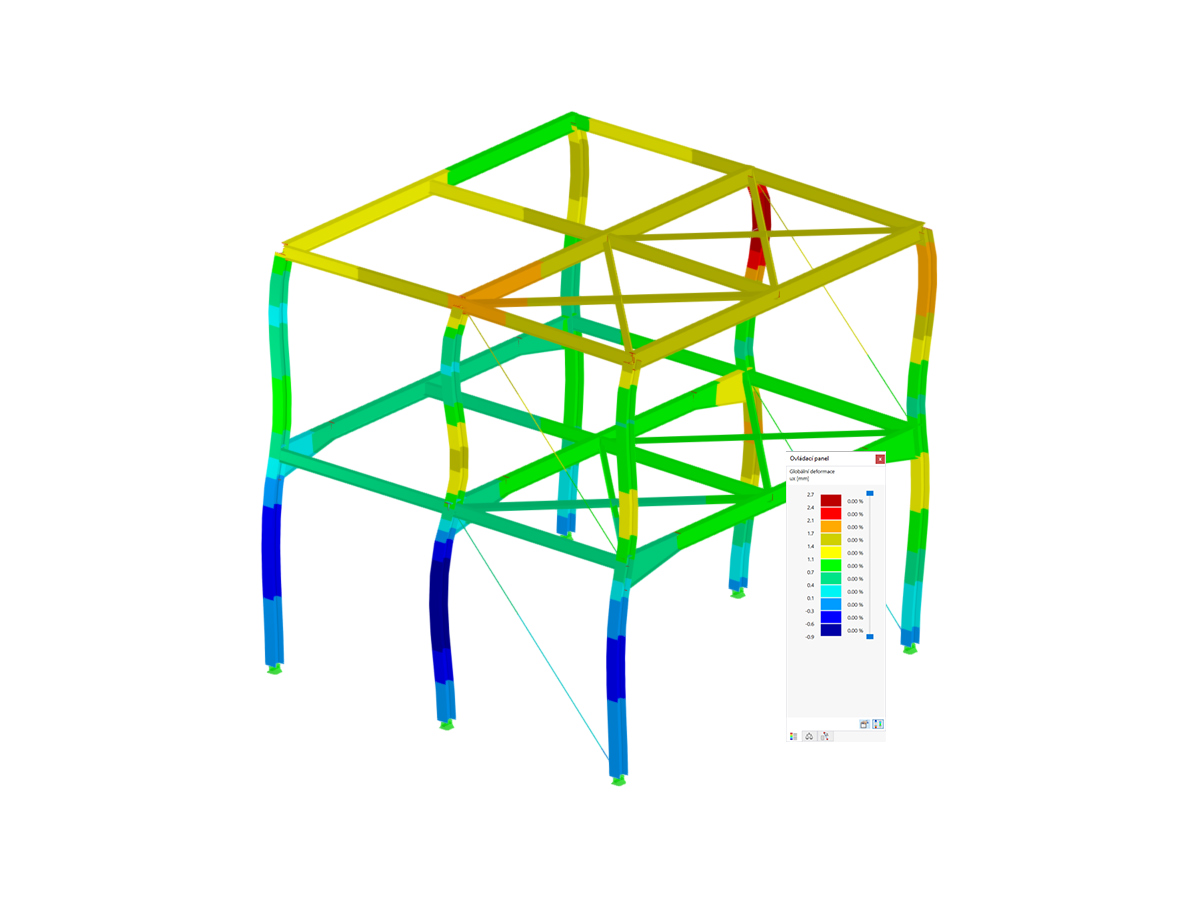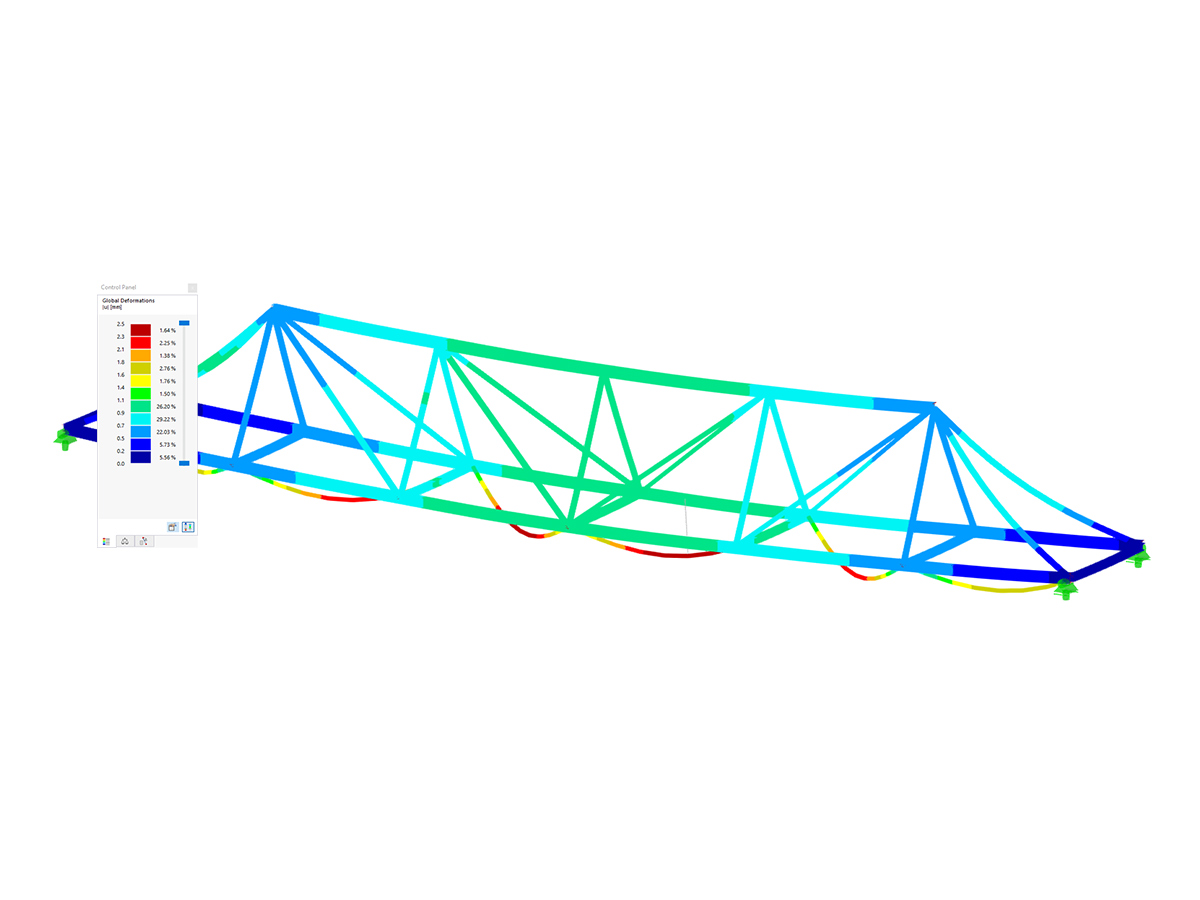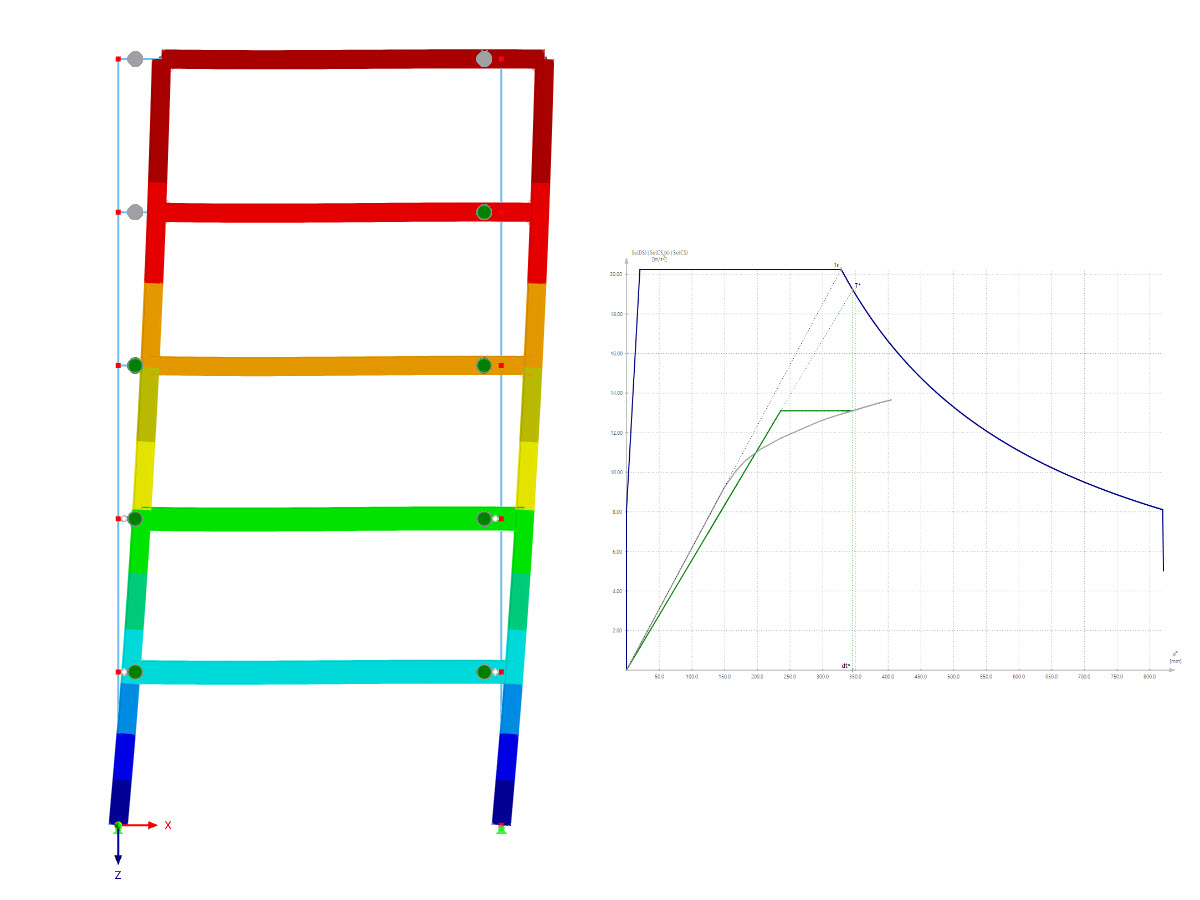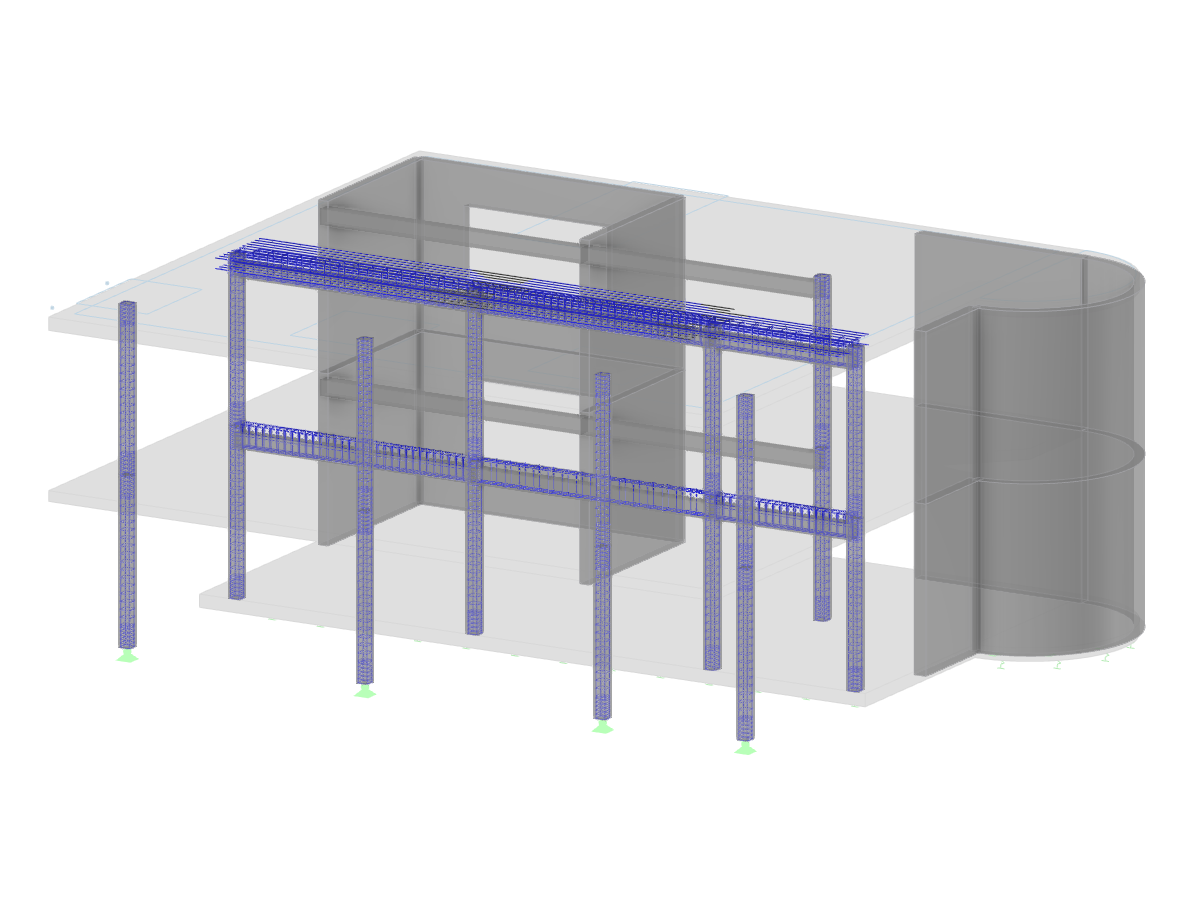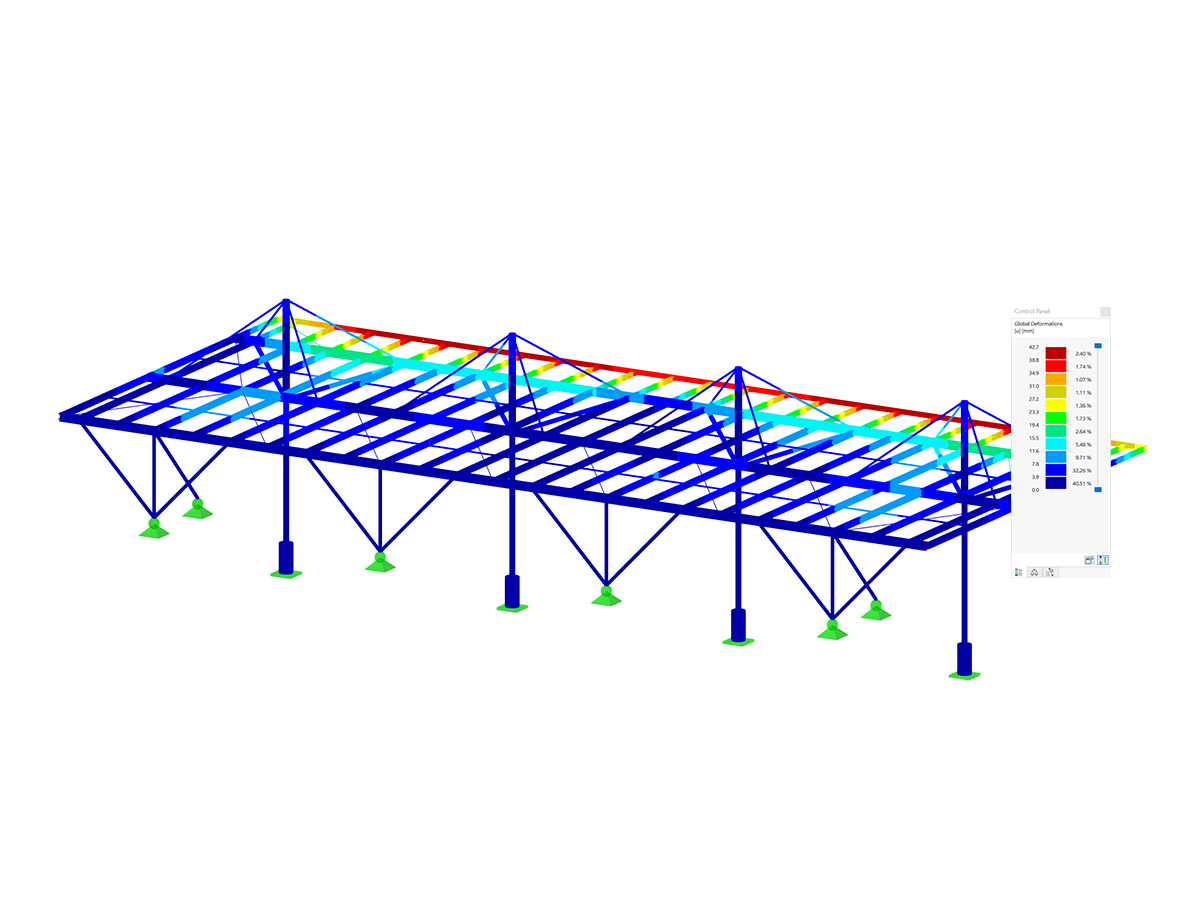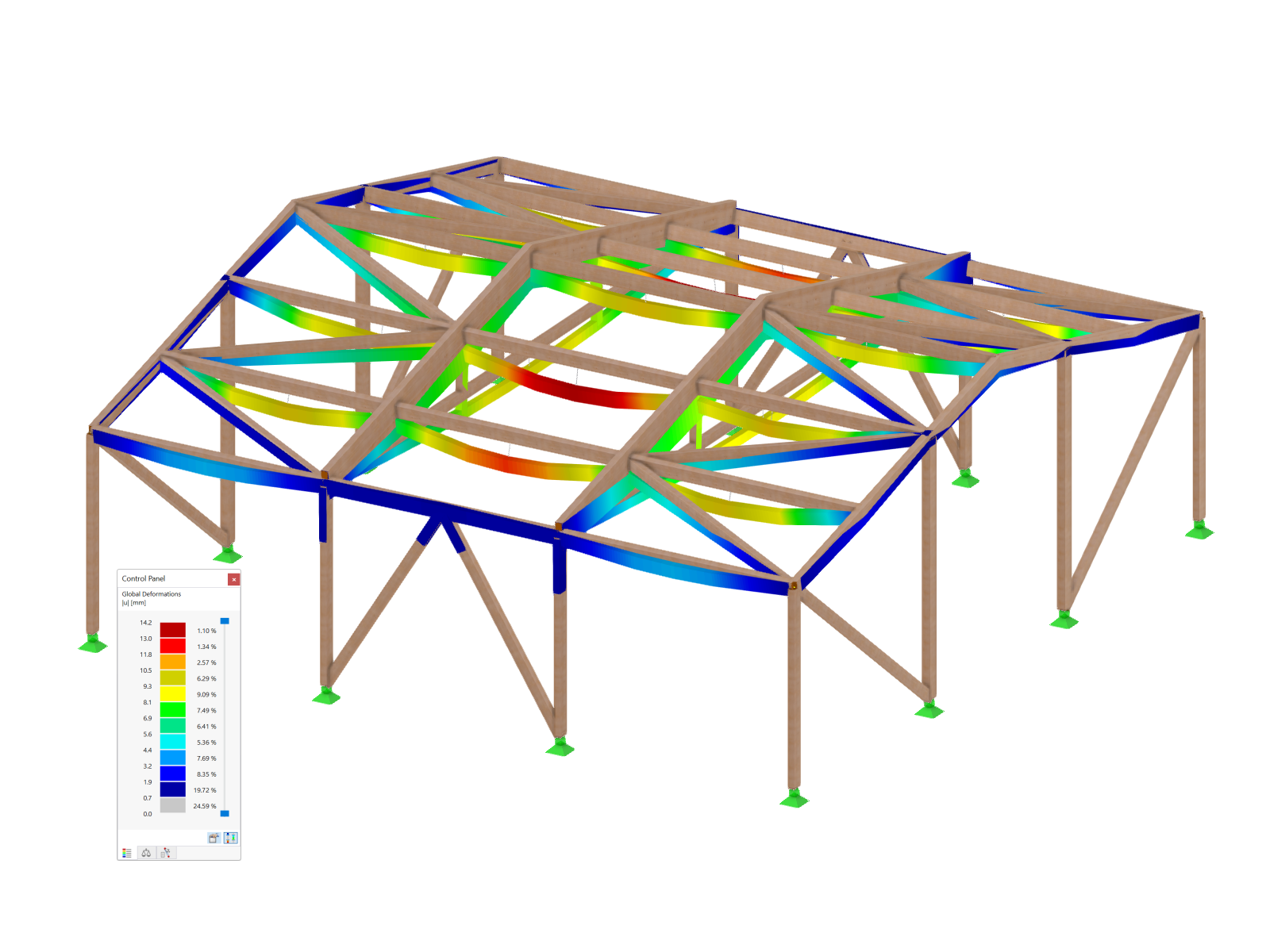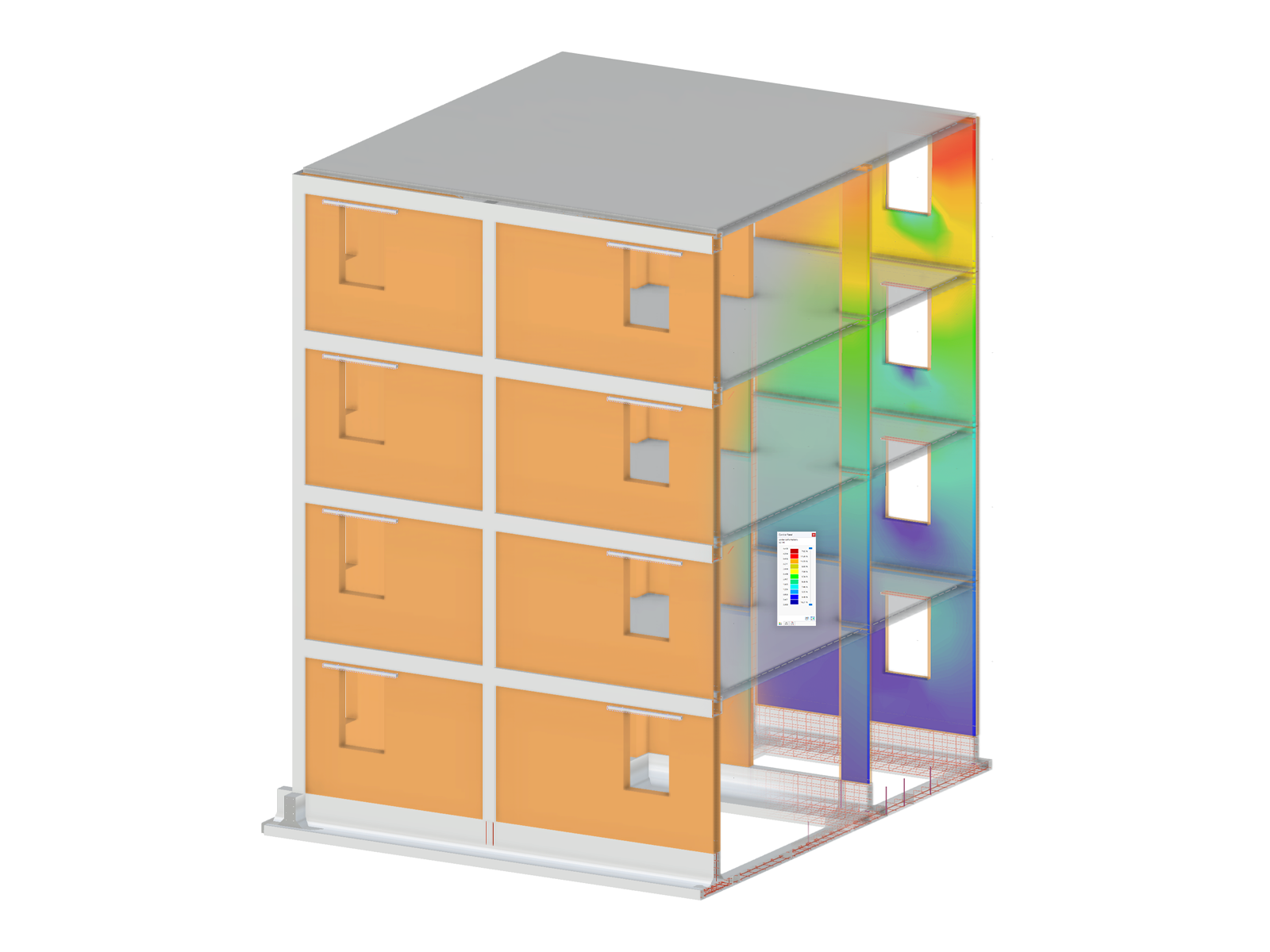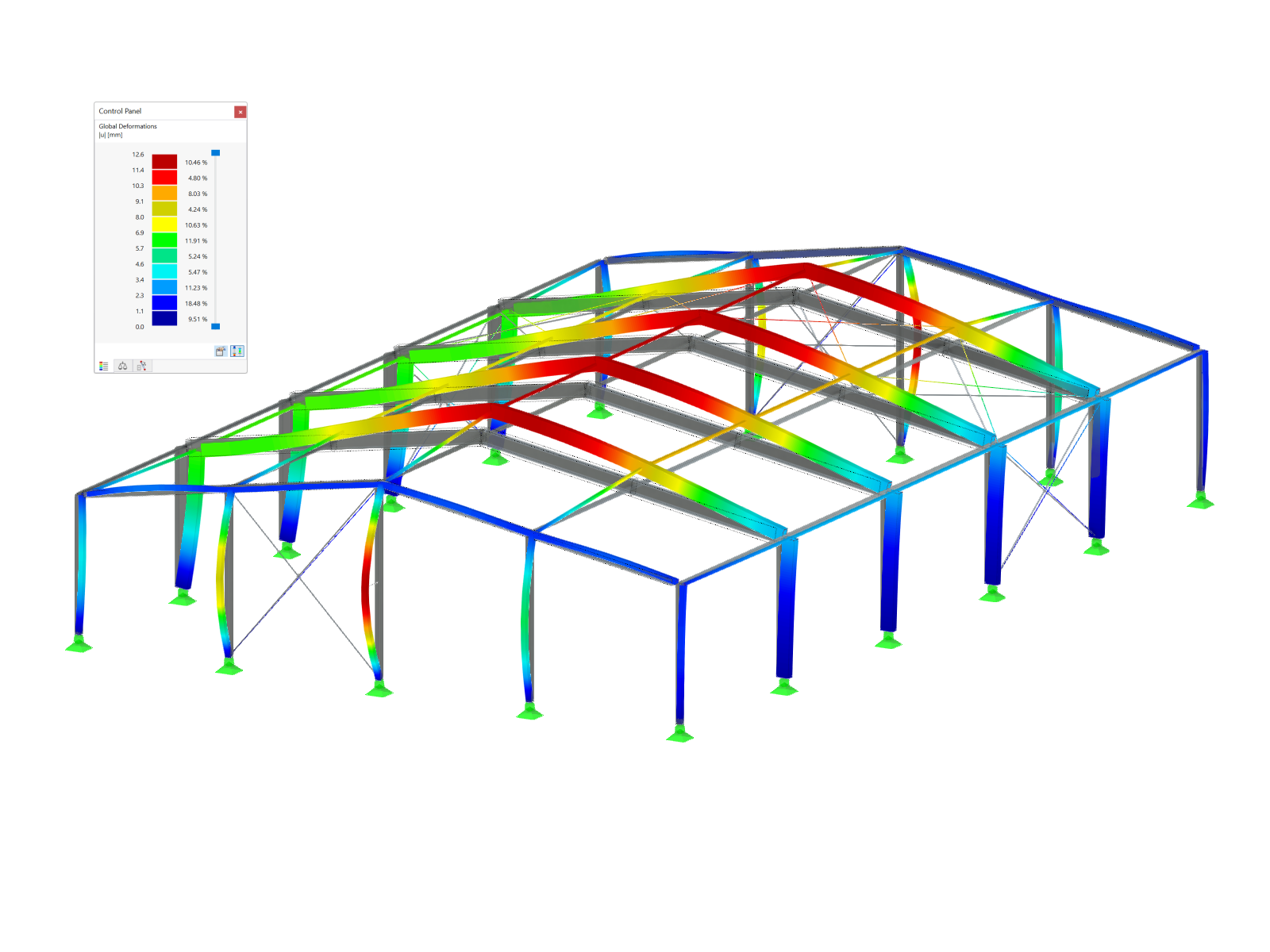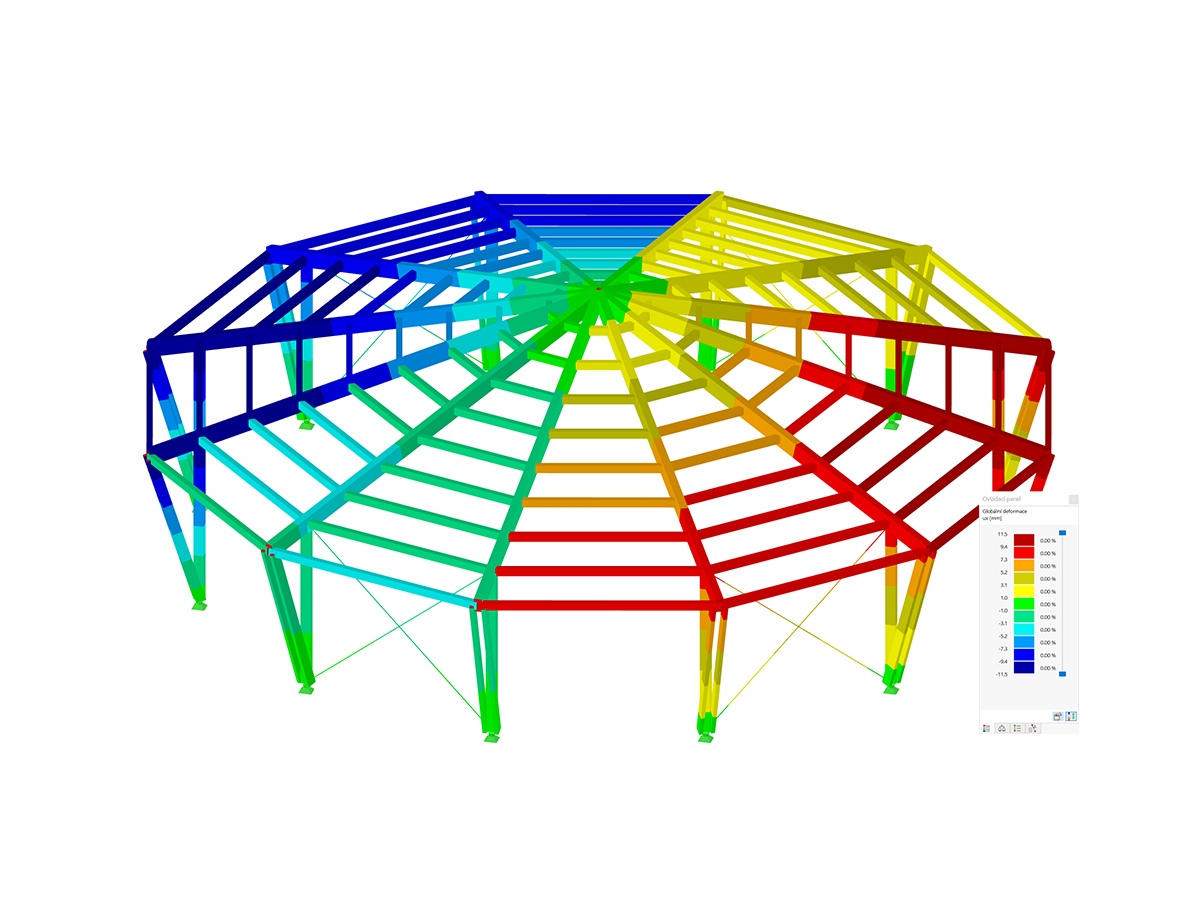This model of a timber lattice roof structure made of glued-laminated timber shows the 300-meter-long roof of the London Crossrail station in the Canary Wharf district, built in just six months. The calculation of the supporting structure with 1,414 glued-laminated timber members and 111 steel pipes was carried out in RSTAB. WIEHAG GmbH from Altheim, Austria – WIEHAG GmbH – took on the design, structural analysis, and construction, which is also documented in the 3D model (© WIEHAG). The model integrates precise representation of the complex timber structure, visually supported by the integrated image. It reflects modern timber construction techniques and innovative engineering.
| 5 star | ||
| 4 star | ||
| 3 star | ||
| 2 star | ||
| 1 star |
Timber Lattice Roof of Crossrail Station
| Number of Nodes | 5688 |
| Number of Members | 5059 |
| Number of Load Cases | 189 |
| Number of Load Combinations | 608 |
| Number of Result Combinations | 24 |
| Total Weight | 658.691 t |
| Dimensions (Metric) | 310.294 x 32.588 x 19.432 m |
| Dimensions (Imperial) | 1018.02 x 106.92 x 63.75 feet |
| Program Version | 8.03.00 |
![Basic Shapes of Membrane Structures [1]](/en/webimage/009595/2419502/01-en-png-png.png?mw=512&hash=6ca63b32e8ca5da057de21c4f204d41103e6fe20)
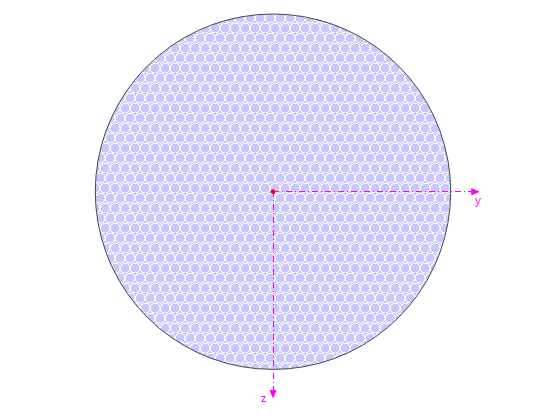
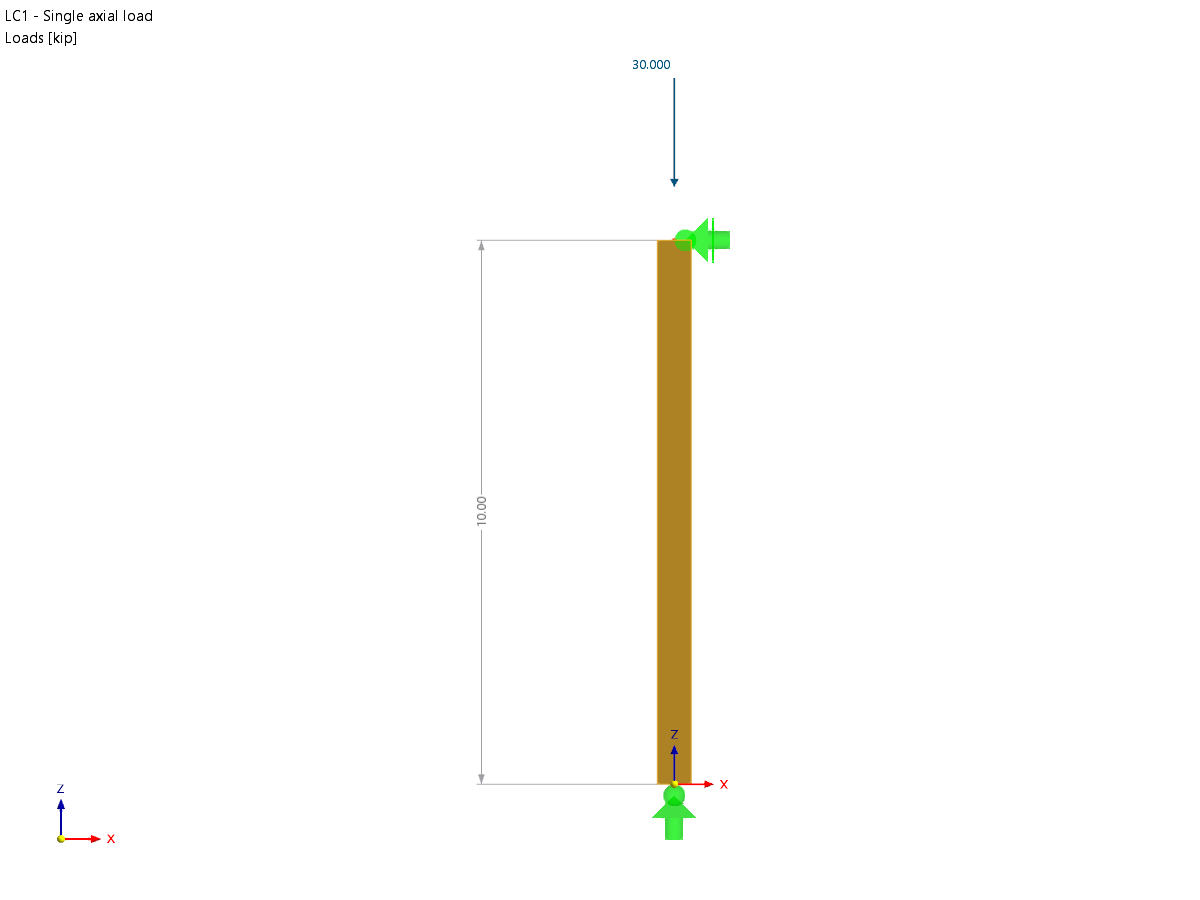
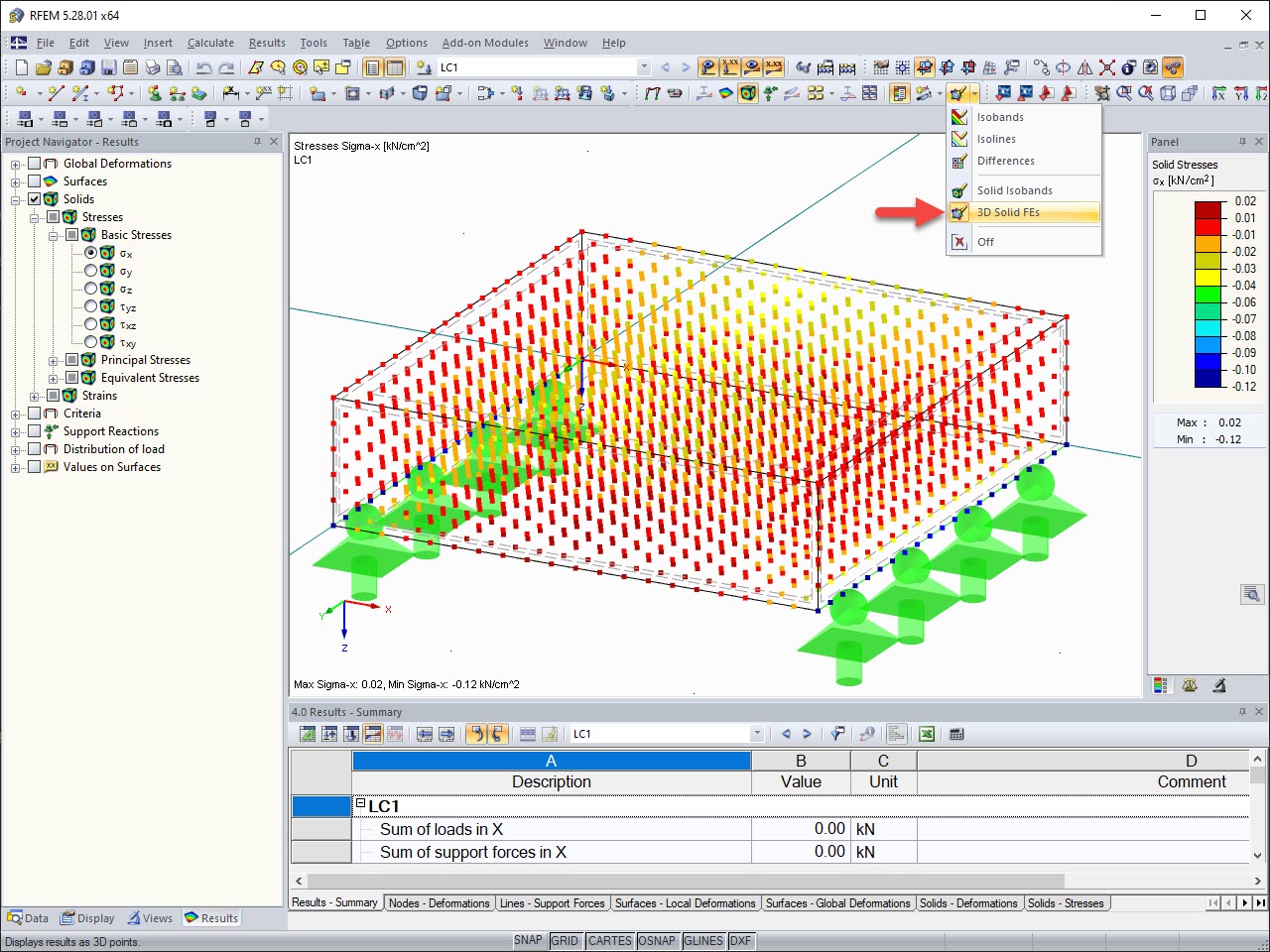
The results of solid stresses can be displayed as colored 3D points in the finite elements.
.png?mw=512&hash=ea9bf0ab53a4fb0da5c4ed81d32d53360ab2820c)
The number of degrees of freedom in a node is no longer a global calculation parameter in RFEM (6 degrees of freedom for each mesh node in 3D models, 7 degrees of freedom for the warping torsion analysis). Thus, each node is generally considered with a different number of degrees of freedom, which leads to a variable number of equations in the calculation.
This modification speeds up the calculation, especially for models where a significant reduction of the system could be achieved (for example, trusses and membrane structures).

Display extended strains of members, surfaces, and solids (for example, the important principal strains, equivalent total strains, and so on) in the Project Navigator - Results in RFEM as well as in Table 4.0.
For example, you can display governing plastic strains when performing the plastic design of connections with surface elements.

RFEM and RSTAB models can be saved as 3D glTF models (*.glb and *.glTF formats). View the models in 3D in detail with a 3D viewer from Google or Babylon. Take your VR glasses, such as Oculus, to "walk" through the structure.
You can integrate the 3D glTF models into your own websites using JavaScript according to the instructions (as on the Dlubal website Models to Download): "Easily display interactive 3D models on the web & in AR" .
Where can I find the update reports for RFEM 5, RSTAB 8, SHAPE-THIN, SHAPE-MASSIVE, RX-TIMBER, CRANEWAY, PLATE-BUCKLING, COMPOSITE-BEAM?
For my NVIDIA graphics card, I need to select between a driver from the "Production Branch" and a "New Feature Branch." Which driver is best suited for RFEM/RSTAB?
Why do I get an error message about invalid material when defining timber surfaces?
.png?mw=926&hash=5c6128b14090e432136e3e7a1e54e83e6c6da88c)


.png?mw=350&hash=c6c25b135ffd26af9cd48d77813d2ba5853f936c)

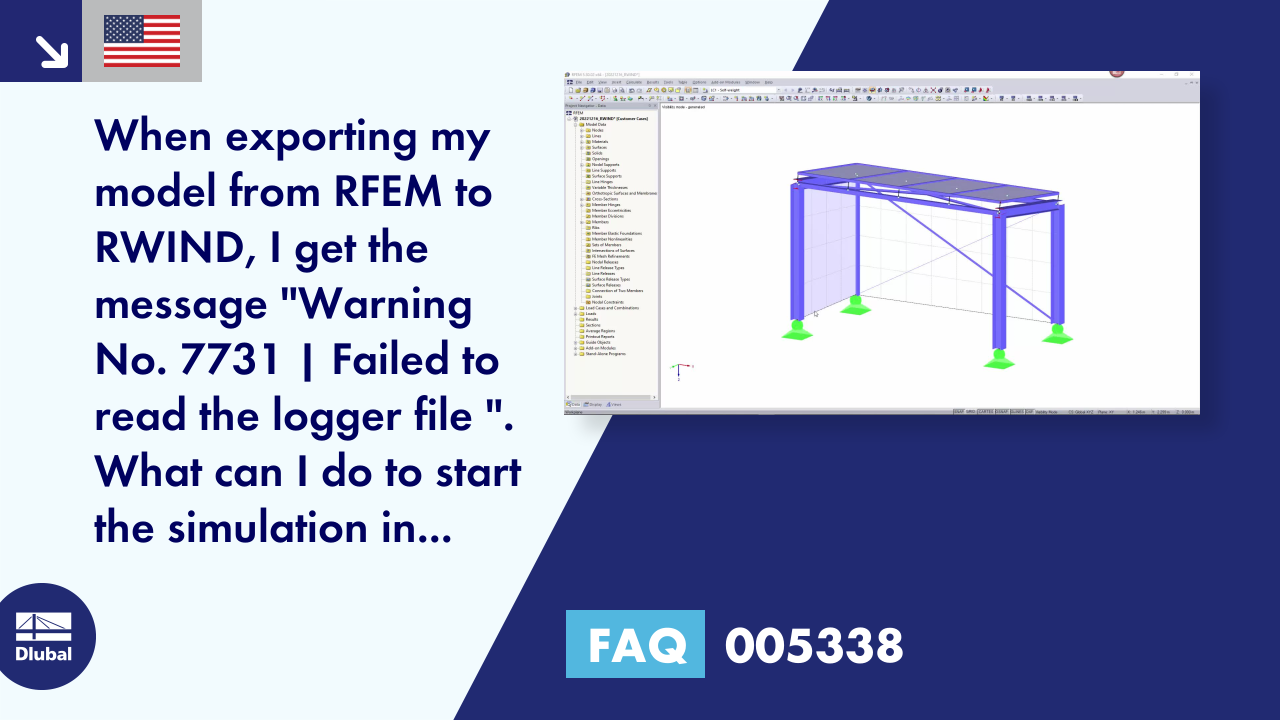




















_1.jpg?mw=350&hash=ab2086621f4e50c8c8fb8f3c211a22bc246e0552)








